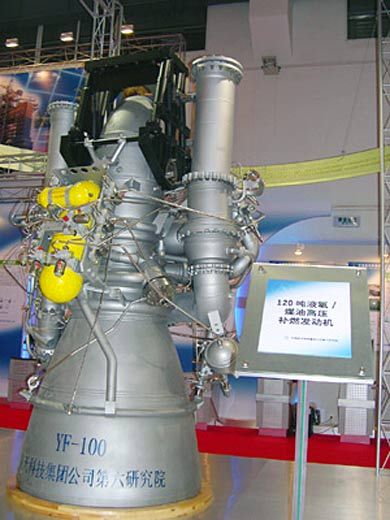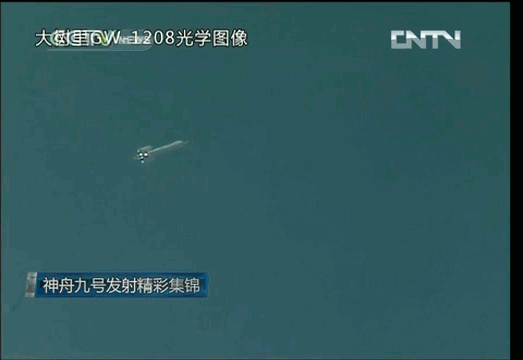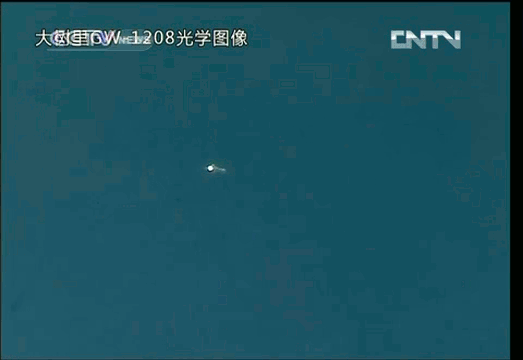Domestic maximum thrust of the Long March V rocket engines received acceptance
Domestic maximum thrust of the Long March V rocket engines received acceptance « Military of China, force comment.
developed by the CASC one hospital, six homes LOX/kerosene engine
Huashang – China Daily News (Reporter Wang Weiping) recently production from six hospitals in the China Aerospace 120-tonne liquid oxygen-kerosene engine “through the site of the National Defense Science and Industry Council acceptance. The big thrust engine will be the Chinese manned spaceflight, lunar exploration, the space laboratory as well as the implementation of the main driving force of deep space exploration missions and other projects.
The rocket engine thrust maximum
According to reports, China had launched the Shenzhou series of carrier rockets, the main engine thrust are 75 tons, with China the development of the aerospace industry, this thrust of the engine can not meet the demand for more far-reaching space exploration. 120-ton liquid oxygen-kerosene engine is the month engineering, aerospace six homes for the above-mentioned current situation, developed for the new generation carrier rocket series, non-toxic, non-polluting, high-performance, highly reliable power plant, the future exploration of space experiments room and even deep space exploration missions and other necessary power base, is currently China’s largest thrust rocket engine.
the engine developed to fill the blank in China staged combustion cycle engine technology, mastered the core technology, China has become the second country to master the high-pressure staged combustion cycle liquid oxygen kerosene engine technology after Russia, to achieve a open cycle liquid from the conventional toxic propellant propulsion technology, a huge leap in technology to the green non-toxic propellant closed cycle liquid propulsion. The future, it will replace the current conventionally-powered engine.
is a milestone in the history of China Aerospace Power
May 27 to 28 days, Huya Feng, Deputy Secretary of Defense Science and Industry Bureau led to six hospitals in the aerospace The organization conducted a 120-ton liquid oxygen-kerosene engine developed to project acceptance. From the National Defense Science and Industry Bureau, the Provincial National Defense Industry, the China Aerospace Science and Technology Corporation and its affiliated research institutes, and the Harbin Institute of Technology, Beihang University, NPU units, experts, reached unanimously by the acceptance of a final view.
the engine in September 2000 through the national project of development and technical support conditions, in October 2001 transferred to the beginning of the development phase into the sample stage in December 2005. As of September 2011, three engine acceptance and success as a symbol, the hospital had developed the dozens of 120-ton liquid oxygen kerosene engine, the cumulative test to more than 32,000 seconds, the stability of the state of the sample technology, to achieve the development goals approved by the state .
Huya Feng, deputy director of 120-ton liquid oxygen kerosene engine development success is a milestone in the development process of China’s space power.
It is understood that China’s new generation carrier rocket, Long March V “developed in Tianjin on the end of successful completion of the booster large-scale separation test, which marks the China” rocket “prototype development phase is the most important one of the large ground-based experiment was a complete success. The 120-ton liquid oxygen kerosene engine “is the” big “the main thrust of the rocket engine.
, however, soon will be China’s first manned space space rendezvous and docking, “divine nine” mission to launch the main thrust of the engine remains at 75 tons.
related reports:
Photo: Chinese Long March 3B rocket engine tail vents up to 8
new generation of large carrying Rocket Engine Test
120-ton rocket engine test the success of the first 600 seconds
new 120 tons of liquid oxygen kerosene rocket engine test successful
China generation of large launch vehicle engine thrust of 120 tons











, by 2020 it will become complete Global Navigation system.




 Pakistan-China Friendship Zindabad
Pakistan-China Friendship Zindabad 















